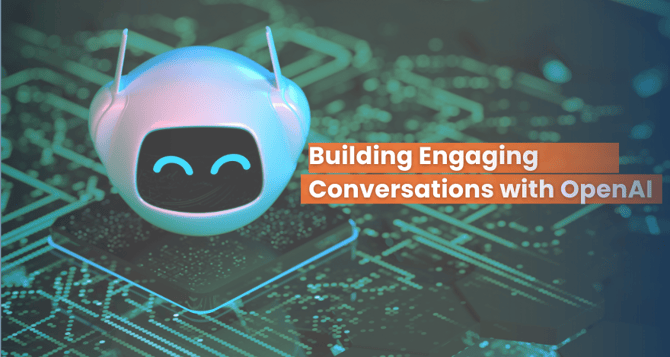Building Engaging Conversations with OpenAI Chatbots
This article guides readers on crafting captivating conversations with OpenAI chatbots. It covers strategies for engaging dialogues, emphasizing user intent understanding and tailored responses to create immersive conversational experiences.

In the realm of artificial intelligence, chatbots have emerged as a powerful tool to facilitate meaningful interactions between machines and humans. OpenAI's advanced language models, such as GPT-3, offer exciting possibilities for creating chatbots that can engage users in dynamic and contextually relevant conversations. In this article, we will explore the technical implementations of building engaging conversations with OpenAI chatbots, providing examples and insights into their capabilities.
The Power of Human-Created Language
At the heart of any compelling conversation lies the ability to understand and generate human-like text. OpenAI's GPT-3 language model achieves this by using a neural network trained on a vast corpus of text from the internet, enabling it to generate coherent and contextually relevant responses. This fundamental capability forms the basis for creating chatbots that can hold engaging and informative conversations with users.
Technical Implementations
1. Prompt Engineering:
The first step in building a conversational chatbot is to construct appropriate prompts. The choice of the initial message is crucial, as it sets the tone for the conversation. By providing clear and contextually relevant prompts, chatbots can be directed to engage users effectively. For instance, when building a customer support chatbot, a prompt like "How can I assist you today?" can initiate a helpful conversation.
2. Context Management:
OpenAI's GPT-3 model is designed to understand context. By including the conversation history as part of the input, you can maintain context throughout the conversation. This enables chatbots to remember user queries, preferences, and previous responses. For example, if a user inquires about a recipe, the chatbot can recall and reference ingredients or instructions from earlier in the conversation.
3. Response Control:
One key aspect of chatbot engagement is controlling the style and tone of responses. You can use techniques like system messages to guide the behavior of the chatbot. For instance, by inserting a system message that sets the bot's personality as "friendly and informative," you can ensure that the chatbot's responses align with your desired tone.
4. Prompt Variations:
Experimentation is essential in building engaging conversations. By trying various prompts and approaches, you can find the most effective way to elicit the desired response. This could involve rephrasing questions or requests or changing the structure of the conversation to optimize engagement.
5. User Experience Design:
Consider the overall user experience when designing your chatbot. Ensure that the responses are concise, clear, and relevant. Avoid overly lengthy responses, which can deter users, and provide options for users to guide the conversation or ask for clarifications.
Examples
1. Customer Support Bot:
Imagine a customer support chatbot for an e-commerce website. A user starts the conversation with, "I need help with my recent order." The chatbot can respond with, "Of course! I'd be happy to help. Can you please provide your order number?" This response is friendly and gathers the necessary information to assist the user effectively.
2. Educational Bot:
A chatbot designed to assist students might receive a query like, "Explain the concept of photosynthesis." The bot can respond with an informative explanation, utilizing its vast knowledge base to provide a comprehensive answer.
3. Content Recommendation Bot:
For a content recommendation chatbot, if a user asks, "What should I watch tonight?" the bot can respond with, "Sure, I can help with that. What genre are you in the mood for - action, comedy, or drama?" This question allows the user to provide preferences and guides the bot in making tailored recommendations.
4. Personal Assistant Bot:
In a personal assistant context, a user could ask, "What's on my schedule for today?" The bot can retrieve the user's schedule from a connected calendar and provide a concise list of events for the day.
Conclusion
Creating engaging conversations with OpenAI chatbots is an exciting endeavor that combines the power of human-created language with technical implementation. By carefully crafting prompts, managing context, controlling responses, experimenting with variations, and designing for user experience, developers can build chatbots that hold meaningful and contextually relevant dialogues with users.
Elevate Your Business with Custom AI Solutions
Our AI development services offer a tailored approach to meet your specific business needs. Let's discuss your project today!
Whether it's in customer support, education, content recommendations, or personal assistance, OpenAI's language models provide the tools to create chatbots that make interactions more engaging and valuable. The future of chatbots holds endless possibilities, and as we continue to refine and develop these conversational AI systems, they will undoubtedly become even more integral in various aspects of our lives, serving as helpful, friendly, and informative companions in our digital journeys.


%201-1.webp)


.png?width=344&height=101&name=Mask%20group%20(5).png)
















